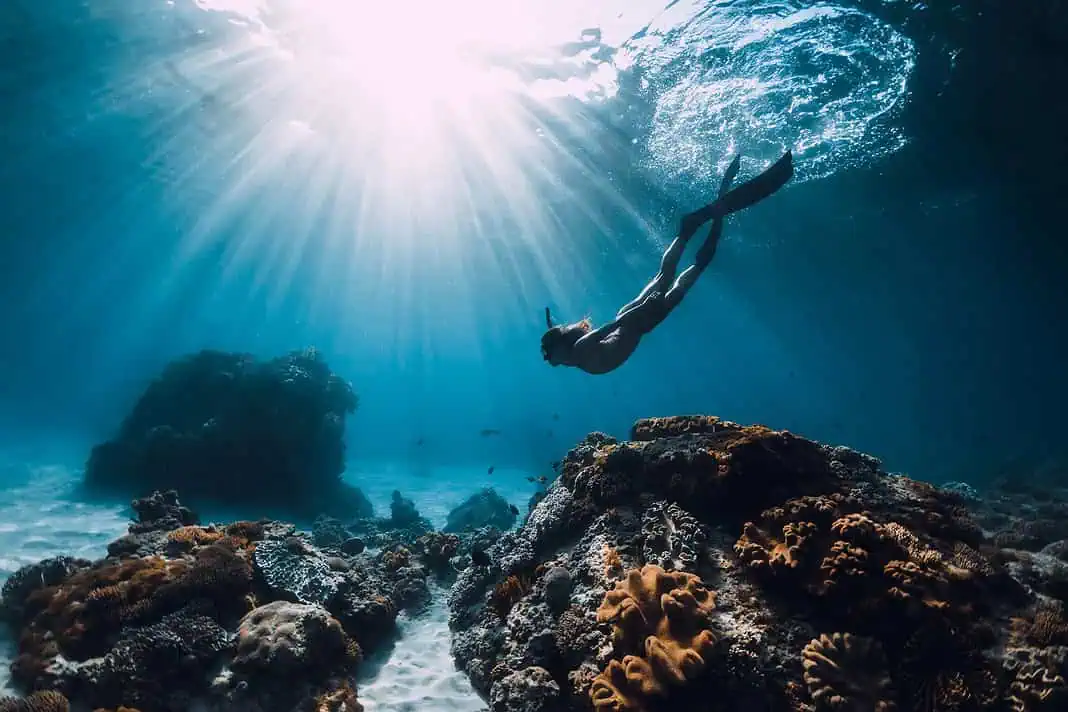Can you go freediving alone?
Technically, no one is stopping you, and you’re free to do anything you want.
But the real question is – should you freedive alone?
No, you should absolutely never freedive alone – any underwater breath-holding should only be done with a trained buddy.
In this past month of May alone, I’ve personally heard of 3 recreational freediving accidents that ended with fatalities:
- A freediver in Panglao, Bohol, Philippines, who appeared to be fun diving, most likely alone – was allegedly discovered floating face-down by other people
- A freediver in China practicing static breath-holding in a pool with a non-freediving friend – one who watched him pass away at the bottom of the pool and didn’t realize he was dying (the article can be Google translated)
- A freediving instructor/athlete who was fun diving and spearfishing near a shipwreck in the US – his body was never found
Freediving is constantly referred to in the media as a dangerous and extreme sport, but then why is it that freediving athletes who are seriously pushing limits in competition stay alive while recreational freedivers are more likely to lose their lives?
Competitive Freediving Fatalities
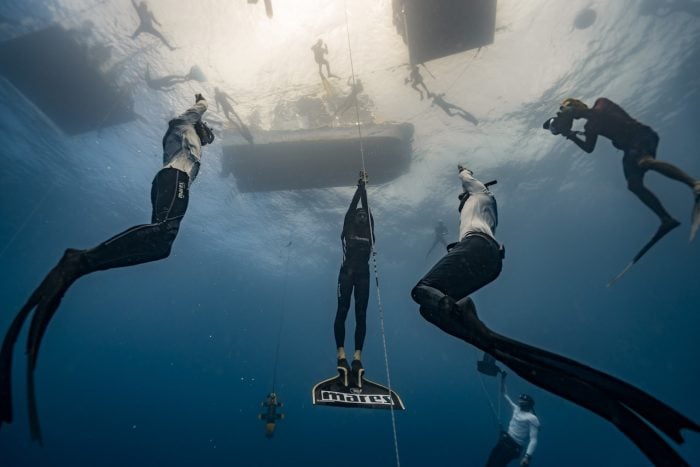
Did you know that in the many years freediving competitions have been held, only 2 competitors have passed away?
The first is Audrey Mestre in 2002, who dived to 171m (561ft) in the No Limits discipline, where a freediver descends to depth with a weighted sled and ascends with an inflatable lift back.
The second is Nicholas Mevoli in 2013, who attempted a US National Record of 72m (236ft) in the Constant Weight No Fins discipline, where freedivers dive to depth and back up using only arm strokes and leg kicks.
Today, No Limits (NLT) is no longer a discipline in freediving competitions. Furthermore, competition rules have been amended multiple times (and continuously updated) to make competitions safer for freedivers.
While freediving competitions can control the environment, safety, medical staff, and rules freedivers compete under, people who dive recreationally (whether they are line training, fun diving, spearfishing, etc.) are not under anyone’s control.
So even though the number one rule is to never freedive alone and always have a trained buddy, it’s up to a freediver to follow this rule—no one is there to enforce it.
Let’s switch gears and discuss how freedivers can train and dive safely.
Take a Certified Freediving Course
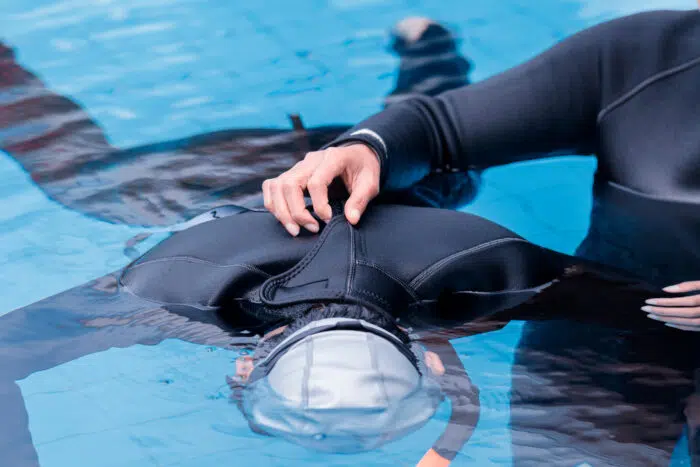
In freediving, you, as the freediver, are the first line of safety. And if you are a self-taught freediver thinking about learning through YouTube videos or articles or a spearfisher who learned how to freedive from friends, I strongly urge you to take a certified freediving course.
Here’s why.
Instructor Safety and Experience
Did you know that instructors teaching a certified freediving course will be held liable if you get injured?
While someone teaching you freediving probably does feel morally responsible for your safety if something happens, instructors feel extra pressure for their job security’s sake. Through their instructor course (and their own teaching experiences), instructors learn how conditions or dives can go wrong, and the bad habits many students develop that can result in injuries. They’re also well-versed in practicing rescue. These instructors are the ones teaching you how to be your own best first line of safety.
Of course, one could argue that bad instructors slip through the cracks. But that’s why you look for an instructor with lots of experience, a good reputation, and stellar reviews.
Quality of Information
A manual from a certified freediving course is written by professionals and knowledgeable freedivers, with some freediving organizations like Molchanovs regularly updating their course manuals to keep them current. Slide sets often accompany freediving manuals to highlight the important points. All of that is finished with an exam with a passing rate, encouraging you to learn the materials.
If you’re set on learning how to freedive, especially how to do so safely, you must ensure that the information you are being given is correct and current. The best way is through a certified freediving course with standardized teaching material.
Technique
Maybe a self-taught, freediving friend of yours can teach you how to get to 10m (33ft), and maybe you already can reach it. But are you getting there as efficiently as possible, with the least oxygen consumption? Can you go deeper with the same technique and not risk injury (extended neck, tension in the chest, ineffective bicycle kicks that consume too much oxygen, proper recovery breaths, etc.)?
While deep numbers or long distances/breath-hold times sound nice at first if you’re not doing it as efficiently as possible, it won’t feel very good as you progress, and it definitely won’t be safe. Imagine how much better your performance could be if you had proper technique!
Find a Trained Buddy
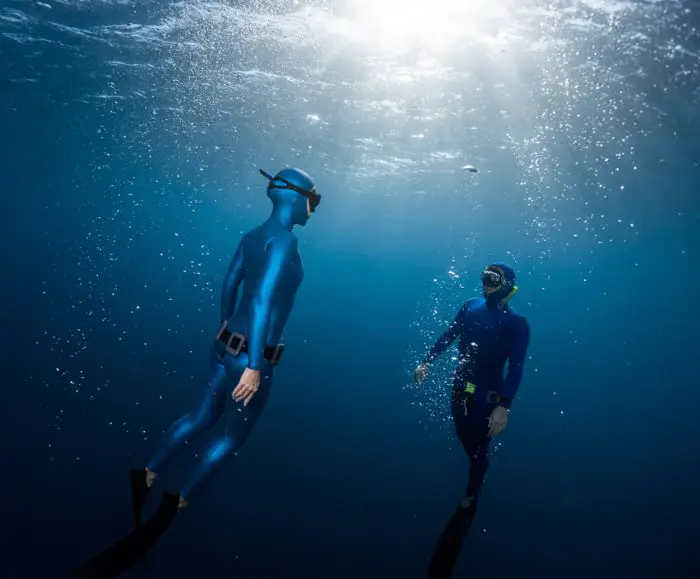
Sometimes, finding a qualified buddy to dive with you can be difficult if you’re living somewhere far from the sea or a big city, which puts freedivers in a tough spot. Luckily, some online resources that can help you find a freediving buddy – check out “10 Ways to Find a Freediving Buddy.”
But if you still don’t have a buddy, can you use a friend, partner, family member, pool lifeguard, or scuba diver as a replacement?
No, you should not.
Earlier, I mentioned the Chinese diver practicing breath-holds in the pool with a friend. The friend did not understand the signs of a blackout – signs that would be very clear to a freediver. And even if the friend did realize, how would they have known how to rescue the freediver?
Think carefully if you want to put your loved one, or even a stranger, into that vulnerable position should something go wrong with your dive or breath-hold. And going further, what if the loved one injured themselves trying to rescue you?
Line Train Safely
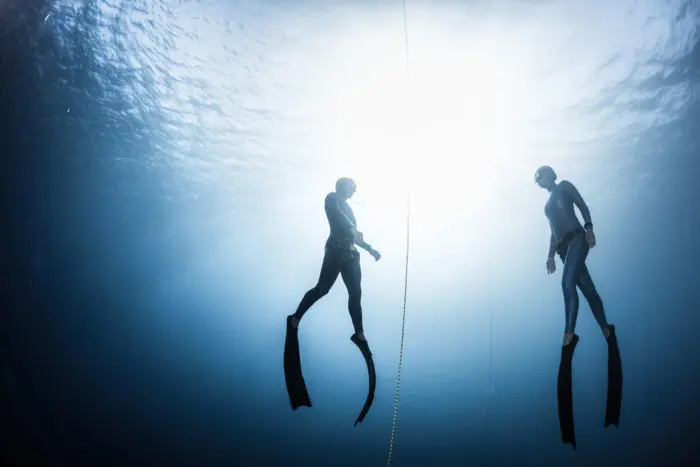
Freediving on a line presents plenty of challenges if it’s not done correctly. Using a freediving lanyard to keep you tethered to a line during training sessions mitigates many risks, as being in open water and susceptible to boat traffic, sudden changes in conditions, current, etc., adds another layer of risk.
An experienced buddy, especially one familiar with the area, can keep you safe and pass their knowledge on to you so that you can also keep them (and future freediving buddies) safe.
You must have a trained freediving buddy when line training – check out “10 Tips for a Smooth Freediving Training Session” to learn how to streamline your sessions.
Fun Dive with Caution
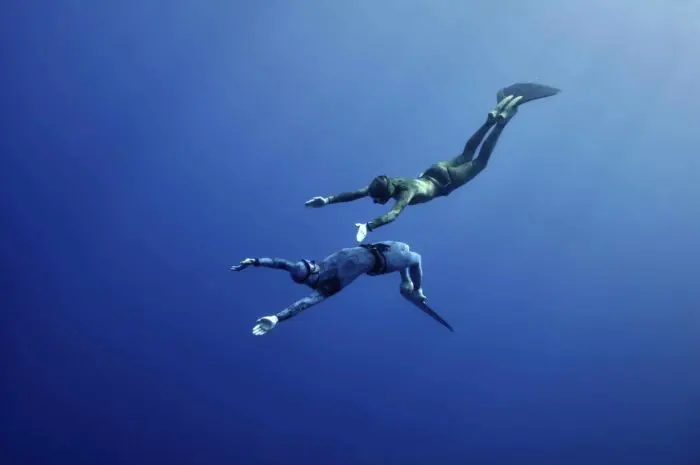
‘Fun diving,’ despite the peppy name, is even riskier than line training in certain situations.
This can be due to:
- Lack of knowledge of a dive site’s conditions (unless diving with a local guide)
- Freedivers being less visible (unless they’re diving with a brightly-colored float or buoy)
- Boat traffic
- Poor visibility, especially if a buddy is diving out of your line of sight
- Current
- Big waves
- Ghost lines
- Injury due to lack of awareness of surroundings (hitting your head on a rock, scraping yourself on coral, etc.)
- Other risks
Because of this, it’s a must to dive with a trained buddy and to dive well under your personal limits (and your buddy’s) when fun diving. See how to fun dive safely (as a certified freediver with a trained buddy) in the “Guide to Fun Diving for Freedivers.”
Final Thoughts
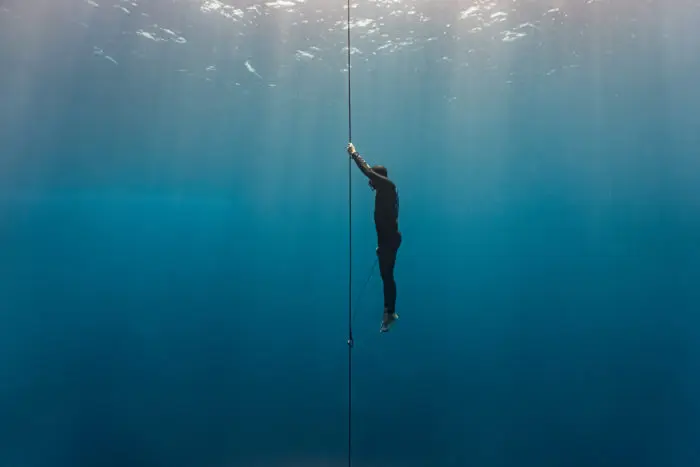
While freediving is a highly meditative, joyful sport encouraging people to explore their physical and mental capabilities, it’s only safe when practiced correctly. The media highlights it as a dangerous and extreme sport, but the reality is that the number of fatalities in competitive freediving is nothing compared to the number of deaths in recreational freediving or spearfishing.
The fact is that these numbers of recreational freediving fatalities would be drastically reduced if freedivers and spearfishers simply followed the number 1 rule in freediving – never freedive alone, only with a trained buddy.
So the next time you consider going freediving alone or with an untrained buddy, whether practicing breath-holding in the pool, fun diving in open water, or spearfishing, think about the impact it would have on your loved ones if you never came home.
That’s the harsh truth about freediving alone.

